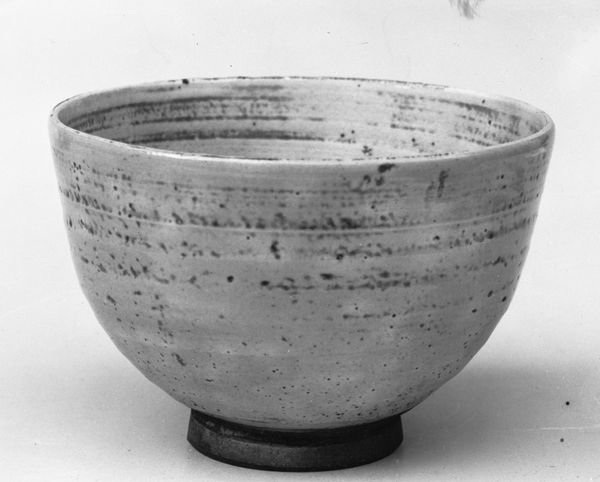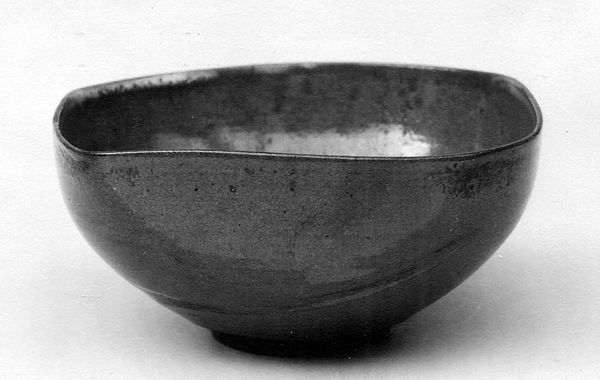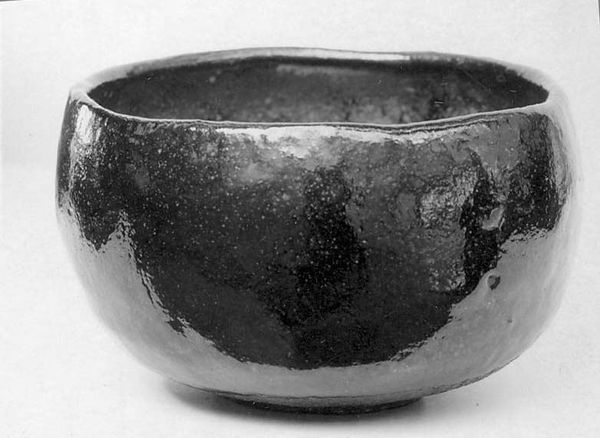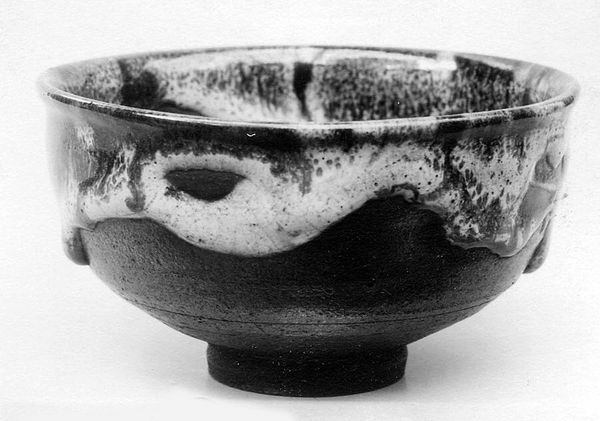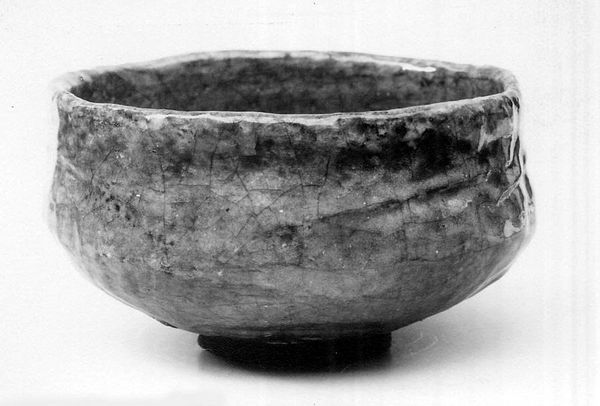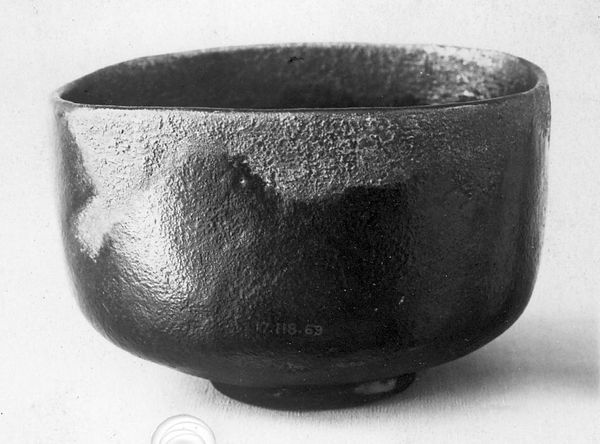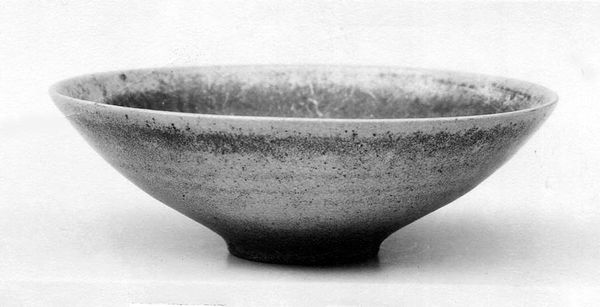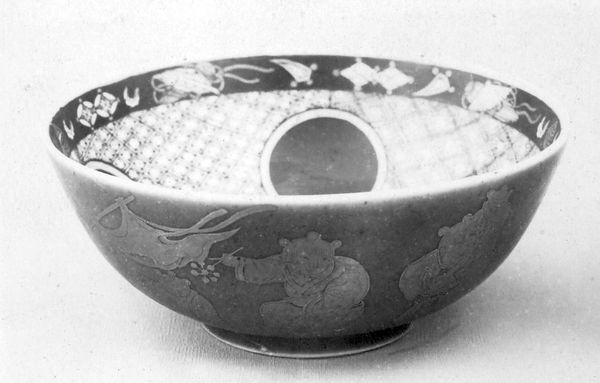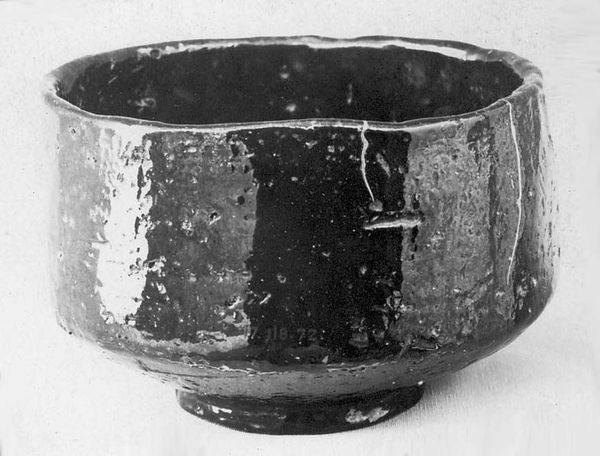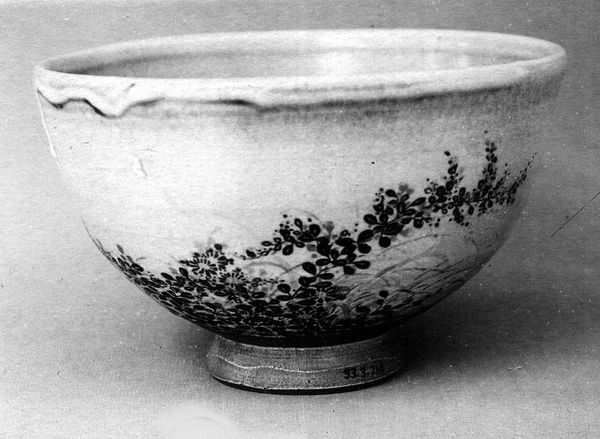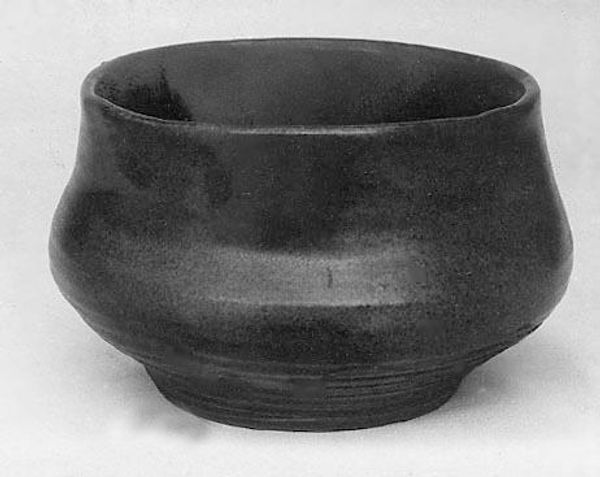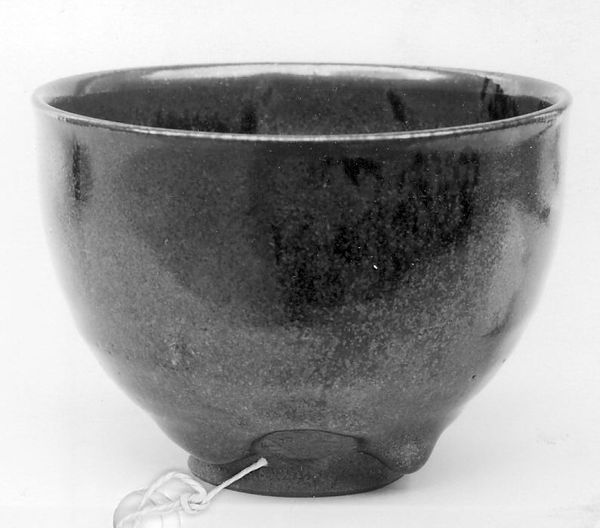
ceramic, sculpture
#
sculpture
#
asian-art
#
ceramic
#
geometric
#
sculpture
#
decorative-art
Dimensions: H. 2 1/4 in. (5.7 cm)
Copyright: Public Domain
This is a humble teabowl, made in Japan by Kiyomizu Rokubei III in the 19th century. Notice its simple form and understated decoration. The bowl is made of rough, unrefined clay, which has been fired to a warm, earthy tone. The glaze is uneven and crackled, with dark markings that suggest age and use. The bowl's decoration is minimal, consisting of a few simple floral motifs. These motifs are rendered in a loose, calligraphic style that emphasizes spontaneity and expressiveness. The flowers appear to be wisteria, with their cascading blossoms and sinuous vines. Wisteria is a symbol of longevity and good fortune in Japanese culture. Consider the bowl’s asymmetry and irregularity. These imperfections reflect the Zen aesthetic of wabi-sabi, which values simplicity, naturalness, and impermanence. This teabowl isn’t merely a functional object, it’s an embodiment of profound philosophical principles, inviting us to contemplate the beauty of imperfection.
Comments
No comments
Be the first to comment and join the conversation on the ultimate creative platform.
